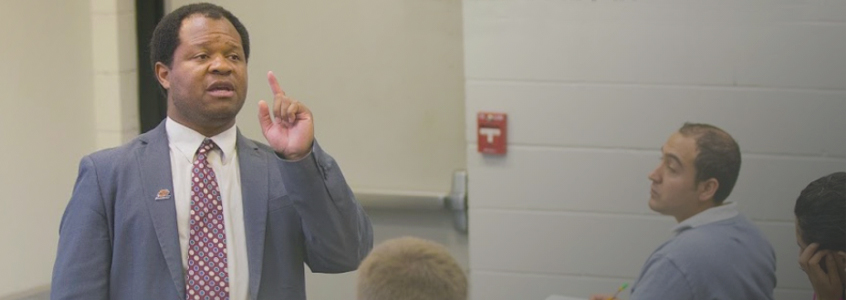Service Learning Faculty

Why get involved in Community-engaged learning?
-
Improve student learning - research has shown that service-learning improves student academic outcomes and student motivation
-
Make a difference - community-engaged learning allows faculty and students to see how their work and ideas can have an impact and practical application on life beyond the classroom
-
Connect to your passion - intellectual passions and service interests can connect through creative community-based projects in ways traditional classes and research may not
-
Attract driven students - students who seek out community-engaged courses have unique life experiences and a commitment to their own learning
-
Improve town-gown relations - creating positive, reciprocal relationships with community partners helps to blur the boundaries between campus and community
-
Publish in new ways - service-learning and community-engaged research creates new knowledge and offers the opportunity to stand out
-
Diversify your CV - service-learning and community engagement makes a nice addition to your tenure and promotion materials.
Community engaged teaching and learning
What is community engagement?
Service-learning defined community engagement is the collaboration between institutions of higher education and their larger communities (local, regional/state, national, global) for the mutually beneficial exchange of knowledge and resources in a context of partnership and reciprocity.
What is curricular engagement?
Curricular engagement includes institutions where teaching, learning, and scholarship engage faculty, students, and community in mutually beneficial and respectful collaboration. Their interactions address community-identified needs, deepen students’ civic and academic learning, enhance community well-being, and enrich the scholarship of the institution.
Is service-learning a new idea?
The practice of service-learning dates back much further than the term itself, beginning with educational movements and social change in the late 1880s. The intellectual foundations of service-learning in the United States trace back to the early 1900s with the work of John Dewey, William James, and others who promoted models of “learning by doing,” and linked service to personal and social development. The term “service-learning” was coined by two educators in 1967 to describe the combination of conscious educational growth with the accomplishment of certain tasks that meet genuine human needs.
How do I start a service learning project?
There are several resources to help you investigate and start a service-learning project. OU’s Program for Instructional Innovation in the Center for Teaching Excellence assists teaching faculty and organizational units to provide educational programs of the highest possible quality and would be a good place to start.
For resources to help design your service learning course.
Principles of Good Practice for Service-Learning Pedagogy
-
Academic credit is for learning, not for service.
-
Do not compromise academic rigor.
-
Establish learning objectives.
-
Establish criteria for the selection of service placements.
-
Provide educationally sound learning strategies to harvest community learning and realize course learning objectives.
-
Prepare students for learning from the community.
-
Minimize the distinction between the students’ community learning role and classroom learning role.
-
Rethink the faculty instructional role.
-
Be prepared for variation in, and some loss of control of, student learning outcomes.
-
Maximize the community responsibility orientation of the course.
[Howard, J., Service-Learning Course Design Workbook, 2001, pp. 16-19].
Are clinicals and internships service learning?
Yes, clinicals and internships may be service learning, IF they are reinforcing material learned in the class or program and are tied back to the SLOs in a course or program.
